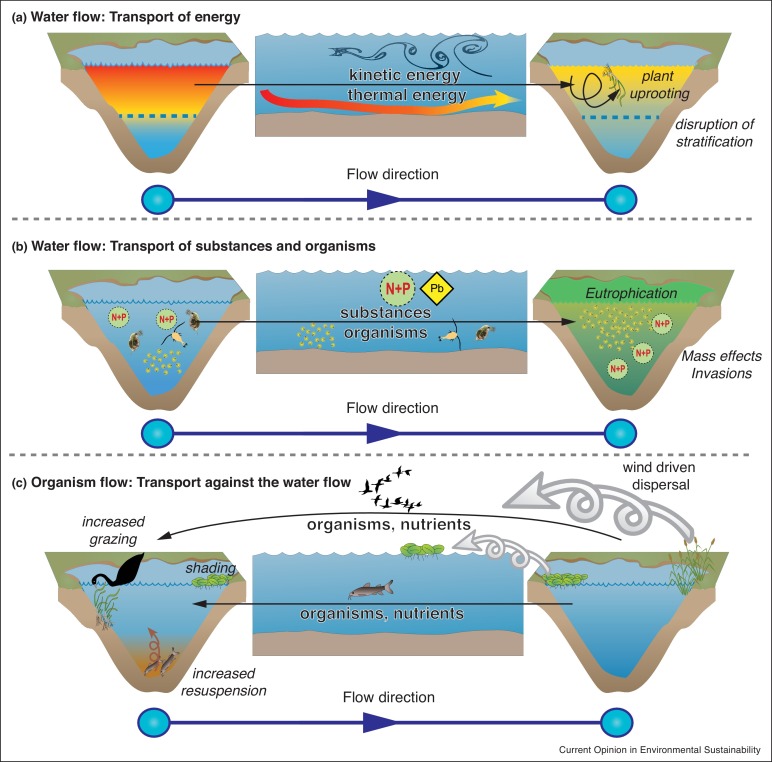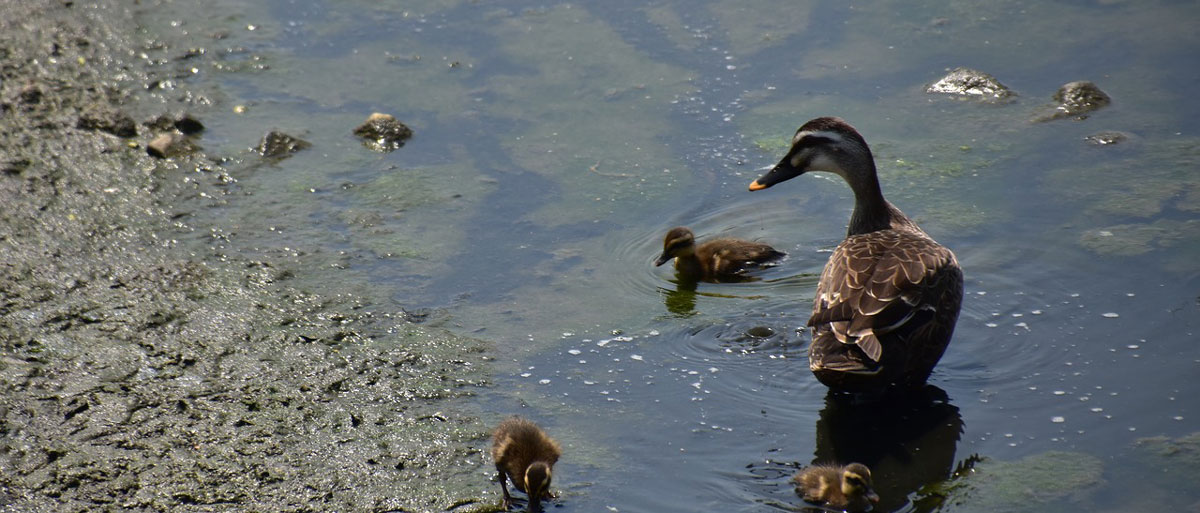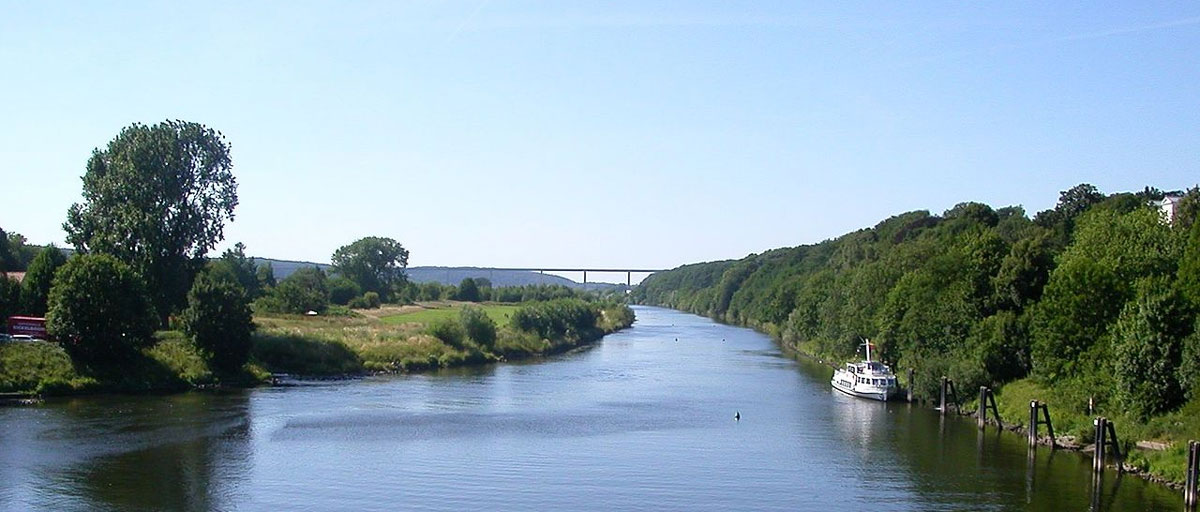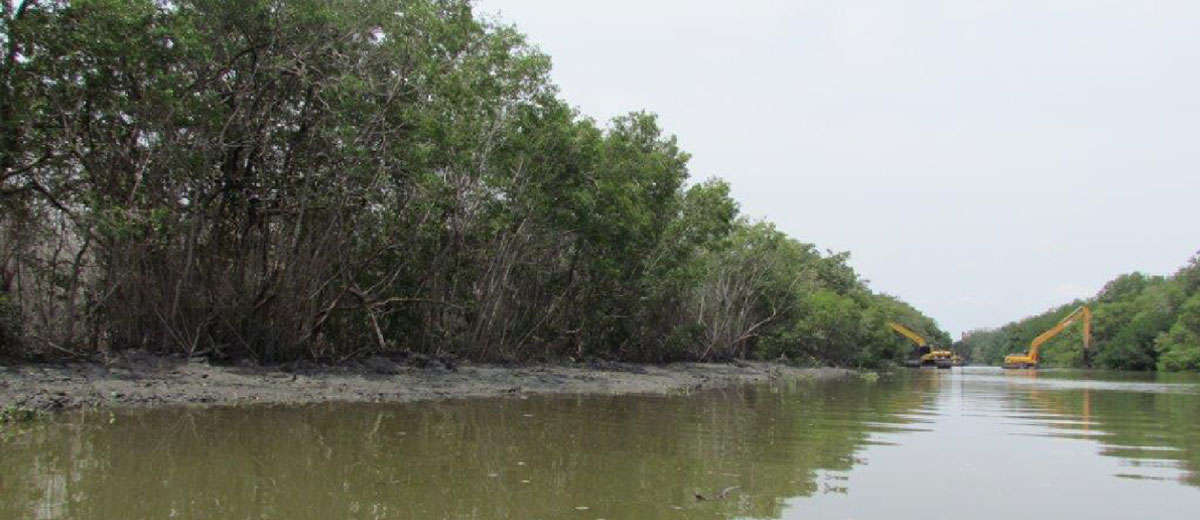Bildtext får vara max två rader text. Hela texten ska högerjusteras om den bara ska innehålla fotobyline! Photo: B. Christensen/Azote
WATER MANAGEMENT
What flows around comes around
Why human actions on land can threaten the quality of water in lakes
- Researchers investigate how harmful substances can travel from land into water and throughout systems of lakes. This has implications for drinking water, food, and other ecosystem services.
- Displaying this process using aquatic ecosystem models, researchers demonstrate how substances can travel on a regional scale through water flow and organism movement, often mediated by humans.
- The study emphasises how it is crucial to regulate pollutants from agriculture and other industries on land that jeopardise water quality.
Luna Leopold was on to something when he said “Water is the most critical resource issue of our lifetime and our children’s lifetime. The health of our waters is the principal measure of how we live on the land.” The renowned US hydrologist captures how the way we live on land affects the condition of water. This is evident in modern agriculture, where pesticides and fertilisers are used to meet the demands of an expanding population. This often results in hazardous chemicals seeping into soil and surface water, affecting the quality of drinking water and food.
But how can we trace the journey of substances on land into connected water ecosystems? An international group of researchers including centre researcher Jan Kuiper might have an answer.
In a study published in Current Opinion in Environmental Sustainability, Kuiper and his colleagues demonstrate how water pathways downstream and organisms traveling upstream can transport energy, nutrients, and substances from local to regional levels. Sven Teurlincx from the Netherlands Institute of Ecology was the lead author.
We argue that aquatic ecosystem models can provide a process-based understanding of how these transports by water and organisms as vectors affect – and are affected by – ecosystem state and functioning in networks of connected lakes.
Sven Teurlincx, lead author
Where water flows, energy goes
Considering the discovery that lakes are connected on a regional scale, the authors indicate that threats to aquatic ecosystems can be local, but often act on a regional scale. In this way, altering the condition of one body of water can lead to a ripple effect throughout the regional network of lakes.
As an example of this process, the researchers indicate that energy is transferred via water flow. A strong current can cause uprooting of aquatic plants, influencing the competitive balance with phytoplankton and impacting aquatic life downstream.
Substances that flow through these networks, such as high levels of the nutrients phosphorous and nitrogen, can lead to eutrophication of water systems. Pesticides, fertilisers, and pharmaceuticals add to the list of substances that pollute lake networks. This is where human actions on land can impact water systems and spread throughout a region.
The study’s authors add that even birds, fish, and wind can transport nutrients and plants against the flow and throughout different water systems. This also adds to the exchange of energy and substances between lakes, as a reason behind changes in their ecological conditions.

Schematic figure illustrating different cases of connectedness of aquatic systems through flows of water and organisms, including examples of the associated ecological effects (italic): (a) the transport of energy through water flow may impact adjacent aquatic systems by transport of thermal energy that impacts stratification regimes and kinetic energy able to cause uprooting of vegetation; (b) transport of substances and planktonic organisms by water flow may cause eutrophication and mass effects or invasions of organisms from the upstream system; (c) actively moving organisms (e.g. fish, birds) or overland dispersal through wind can transport organisms (e.g. free floating plants and plant propagules) and nutrients against the dominant flow direction and even to hydrologically unconnected systems.
From life on land to life below water
To help visualise this interconnected system of lakes, researchers suggest using coupled transport models and aquatic ecosystem models (AEMs). This way of modelling lake systems highlights the reality of water contamination and stresses the importance of regulating pollution in the catchment. Setting a standard for preventing toxins above a certain level is crucial for protecting water quality and biodiversity.
The authors note that “Understanding and predicting these exchanges in a catchment context with process-based AEMs will help to manage aquatic ecosystems, set policy targets at the catchment scale and continue to benefit from the services that ecosystems provide.”
Through this interconnected systems approach, it becomes clear that life on land has implications for the quality of water. The researchers conclude by expanding on the impact of substances traveling through integrated water networks: “To exemplify this in the context of the water–food–energy nexus, fertiliser and pesticide application for food production leads to the eutrophication and toxification of aquatic ecosystems.”
Methodology
The researchers investigated how energy, substances, and biota flow through networks of aquatic ecosystems. They provide a perspective on how to quantify these exchanges using aquatic ecosystem models (AEMs) on a catchment scale. The authors argue that transport throughout a catchment can be modelled according to either a unidirectional flow where the ecological state is stable (requiring one AEM to model), a unidirectional flow with varying ecological states among lakes (requiring multiple AEMs to model), or bi-directional flows where water, substances and organisms may move in all directions (requiring coupled transport and AEMs). The researchers illustrate these modelling processes through schemas that map the flow of energy, substances, and organisms, and the implications this has for aquatic ecosystems as a whole.
Teurlincx, S., van Wijk, D., Mooij, W.M., Kuiper, J., et.al. 2019. A perspective on water quality in connected systems: modelling feedback between upstream and downstream transport and local ecological processes. Current Opinion in Environmental Sustainability Volume 40, October 2019, Pages 21-29










